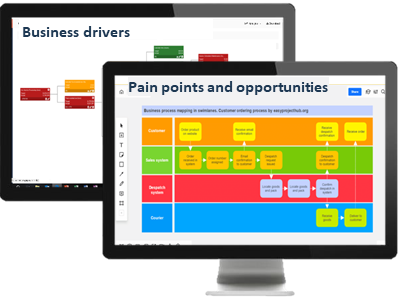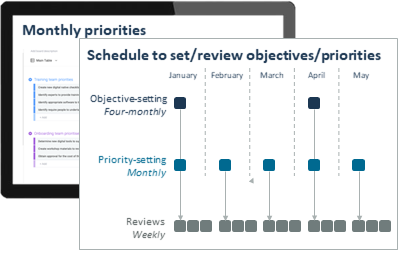Help get your remote team performing by establishing structure and routine:
Once your team is set up to work remotely, reality hits – while a few will delight in staying in their pyjamas all day, many will find it confronting and difficult to be productive. While this could have a structural cause (e.g. home-schooling young children or several people working in a shared living space), many will struggle with the unexpected ‘freedom’ of working outside the office, no longer seated beside teammates or able to ask someone a quick clarifying question.
Re-establishing structure and routine will bring stability and enable your team to perform. This can be achieved by:

What drives your organisation?
While a change in your physical location may not affect the organisation, global and local uncertainty could affect the value drivers or their relative importance. By clearly defining what drives your organisation, you build a broader understanding of what success looks like and what is required to deliver it.
In a changing environment, new pain points and opportunities will arise – engaging your team to proactively identify these issues and opportunities and then figure out how to address them will build alignment and ownership.
Define your team’s objectives and priorities

Once the broader drivers are understood, targets can be agreed upon. Clearly defining what success looks like and how it will be measured will bring clarity to your team and enable you to better monitor whether these objectives and priorities are being delivered.
Your organisation’s objectives and priorities will change with time. Regular reviews will enable your organisation to set direction, then course-correct as things evolve. For most organisations and levels, setting priorities every four months works well, as it allocates three months for priorities to be delivered, then two weeks for review, and another two weeks to agree future priorities.
These priorities can then be broken down into items that can be delivered over shorter periods. The specificity of these actions will depend on the individual, their seniority and their level of skill and will – the higher someone's will and skill, the less defined the deliverable can be.
Close the loop with reviews of results and actions
Next is to actively review progress, coaching your team through the process.
We use ‘Results Action Reviews’. conducted by a manager with their direct reports in regular one-on-one sessions, to cover:
For this to work effectively, it is particularly important to:
Coaching and supporting your team through this process will help them drive higher performance.

Practice, practice, practice
With any new process, practical experience is essential. Initial upfront training will help your team to understand new processes, but ongoing coaching is the key to embedding and sustaining them. Initially, you may need to dedicate considerable time to coaching your team on what they need to do and how to do it, but this upfront investment will rapidly pay off as your team’s performance improves.
In parallel, leaders need to model the required behaviours to reinforce the behaviours’ importance and demonstrate their impact, so your teams don’t perceive these disciplines as being a ‘box-ticking’ exercise.
For those leading teams, the challenge of navigating your team through uncertainty may be challenging, particularly if it is unclear what the situation will look like in a few days, weeks or months. This may make it hard to motivate yourself and support your team.
Build-in time to connect with your team at a personal level, whether by phone or video. This will help both sides to understand the situation, its impact and how you can best assist. Often, by simply asking how things are, the situation becomes less confronting and thereby more manageable.
As moods and emotions are often ‘contagious’, it is important to work out how to keep your mood and performance stable. This could be talking regularly with your peers or your boss to understand what others are facing, leaning on your family for support and/or seeking professional guidance. None of us know how the current situation will evolve, so different viewpoints can help maintain perspective and recognise what you can control.
Establishing a routine with clear priorities and frequent reviews will help you, and your remote team, perform. By maintaining your effectiveness and coaching and supporting your team, engagement and ownership will increase and ultimately translate into a happier, higher-performing team. These disciplines will also set you and your team up to continue performing if (or when) you return to the office.

Tom is the Managing Director of our South East Asian region and heads our Organisation Practice globally.

Andrew is a Director in our Australian office and heads our Organisation Practice across Australia and New Zealand.
| We actively reduce the climate impact from our operations and invest in community-based climate solutions to balance remaining carbon emissions |